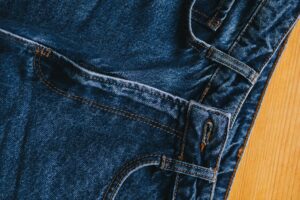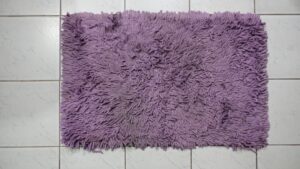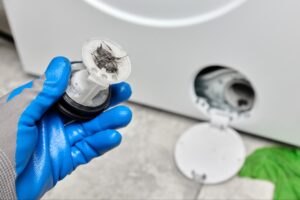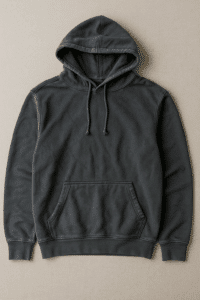How To Remove Grass Stains
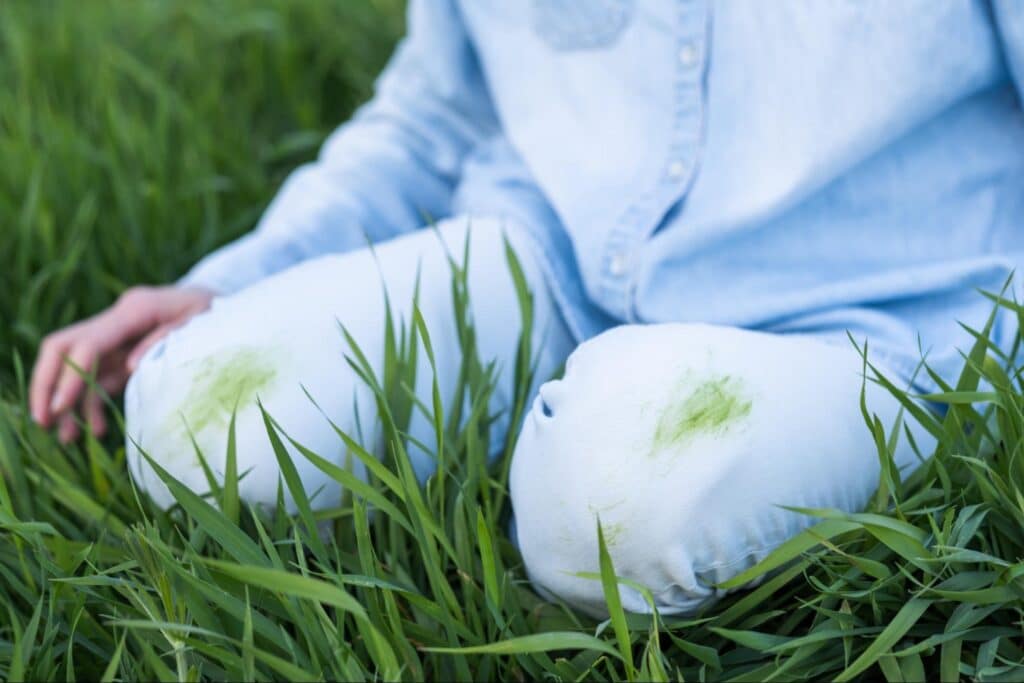
Kids rolling on the lawn or a weekend of gardening can leave your clothes sporting those telltale yellow-green smears. Grass stains might be a proud badge of outdoor fun—on jeans, kids’ t-shirts, even sports uniforms—but they don’t have to be permanent. In this guide, we’ll show you how to remove grass stains from clothing using simple, time-tested methods. By acting quickly and using the right techniques, you can get grass stains out of clothes and keep your wardrobe looking fresh.
 Why grass stains are tough to remove
Why grass stains are tough to remove
Grass stains aren’t ordinary dirt – they’re made of organic pigments that can bond with fabric fibers like a dye. In fact, cotton and other natural fabrics grab onto the green chlorophyll from grass at a molecular level, almost as if you’d tie-dyed the cloth. That’s why grass stain removal can be tricky once the stain sets in.
Timing is everything. A fresh grass stain is much easier to deal with than one that’s been sitting for days or been through the dryer. The longer you wait, the more those pigments sink in and the harder they are to dislodge. We recommend treating grass stains as soon as possible for the best results. And always check that a stain is gone before machine drying your garment – heat can “cook” the stain into the fabric, making it permanent.
How to remove grass stains (step-by-step)
Step 1: Blot or rinse immediately. If the stain is fresh, start by removing any excess grass or mud. Gently blot the stained area with a clean cloth or paper towel and cool water. Don’t scrub at this stage – scrubbing wet grass stains right away can push the pigment deeper. A quick cold-water rinse through the fabric from the back of the stain can also help lift out some of the green before it sets.
Step 2: Pre-treat with a stain remover or detergent. Apply a stain-fighting solution to the grass stain before washing. You can use a liquid enzyme detergent (the kind made for tough stains) or a laundry pre-treatment spray. In a pinch, even a few drops of regular laundry detergent or clear dish soap will work. Rub the solution gently into the stain, using your fingers or a soft laundry brush to work it into the fibers. Let it sit for about 10–15 minutes to break down the grass oils and pigments.
Step 3: Gently scrub (if needed). For durable fabrics like denim or canvas, you can give the stain a gentle scrub while the pre-treater works. Using an old toothbrush or soft brush, lightly scrub the area in a circular motion. This agitation helps loosen the grass particles from the threads (jeans can handle a bit of elbow grease, making it easier to remove grass stains from jeans). If you’re treating a delicate fabric or knit, skip the scrubbing to avoid damage – just let the detergent soak in.

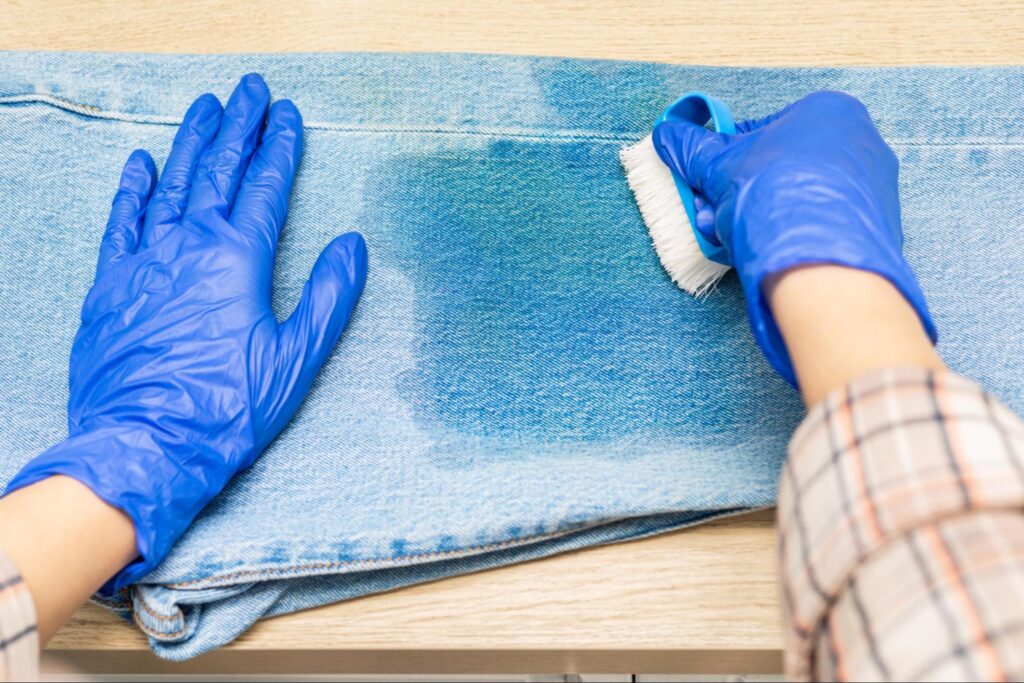
Step 4: Wash the garment properly. Wash the item as you normally would, but pay attention to water temperature and settings. Check the care label and use the warmest water safe for the fabric – for many cottons and synthetics, warm or hot water helps remove the stain more effectively. (Delicate fabrics like athletic jerseys, silk, or wool should be washed in cool water to avoid damage.) Adding an oxygen bleach (color-safe bleach) to the wash can boost grass stain removal, especially for stubborn stains or white garments. Use your washing machine’s regular cycle or a heavy-duty cycle for heavily soiled play clothes.
Step 5: Check before drying. After washing, inspect the previously stained area while it’s still damp. If you still see any hint of green or yellow, do not put the garment in the dryer yet. Heat from the dryer can set any remaining stain, making it much harder to remove. Instead, repeat the pre-treatment and washing steps again or try an alternative removal method (more on those below). If the stain is gone, you can dry the clothing as usual and enjoy its return to a clean, wearable state.
DIY grass stain removal tricks
You might not always have a specialty grass stain remover product on your shelf. But plenty of household staples can tackle grass stains effectively. Some traditional remedies are actually among the best ways to remove grass stains, according to cleaning experts. Here are a few proven options to try:
- White vinegar: The acetic acid in vinegar helps break down grass stain pigments effectively. Mix equal parts distilled white vinegar and water, and soak the stained area for 15–30 minutes. Afterwards, gently scrub the fabric (using a soft brush or cloth) and rinse thoroughly. Vinegar is a cheap, natural grass stain remover that works especially well on cotton and polyester. (Avoid using vinegar on delicate wool or silk, since it could weaken those fibers.)
- Hydrogen peroxide and baking soda (or dish soap): Hydrogen peroxide is a mild bleach that, when paired with baking soda or a few drops of dish soap, forms a powerful cleaning paste. Apply a paste of peroxide and baking soda onto the stain (or saturate the stain with a peroxide/dish soap mixture) and let it sit for about 30 minutes. Then gently scrub the area and rinse with cool water. This fizzing combo can lift even stubborn grass stains, but use it carefully – hydrogen peroxide may lighten colors on some fabrics if left too long.
- Rubbing alcohol: As a solvent, rubbing alcohol can help dissolve the chlorophyll that gives grass its color. Dampen a cotton ball or clean cloth with alcohol and blot the stain, working from the outside in. Let it sit for a few minutes, then rinse. Follow up by washing the garment as usual. Use rubbing alcohol only on sturdy fabrics (cotton, denim, etc.), and always test a small inconspicuous spot first. It can be effective on old, set-in grass stains, but note that it might not completely remove the yellowish hint and should be a last resort if other methods fail.
Tip: For any method above, remember to rinse out the treatment and wash the garment after. Always do a quick spot-test on an unseen area of the fabric when using strong solutions like vinegar, peroxide, or alcohol, to ensure they won’t cause discoloration.


When to get extra help with grass stains
Even with all the right techniques, some grass stains (especially older, set-in ones) might not budge completely. Don’t worry – that’s when a professional touch can make a difference. If you’ve tried your best or simply don’t have time to wage war on stubborn stains, our team at SpinCycle is ready to assist. For instance, you can drop off your items for
Wash & Fold service, and we’ll handle the grass stain removal for you with expert care. We even offer
pickup & delivery, so you can reclaim your free time while we do the dirty work. Every garment gets attention from our clean-obsessed staff (we’ll even use our ozone-sanitized process for a deep clean), and we’ll return your clothes fresh, clean, and folded.
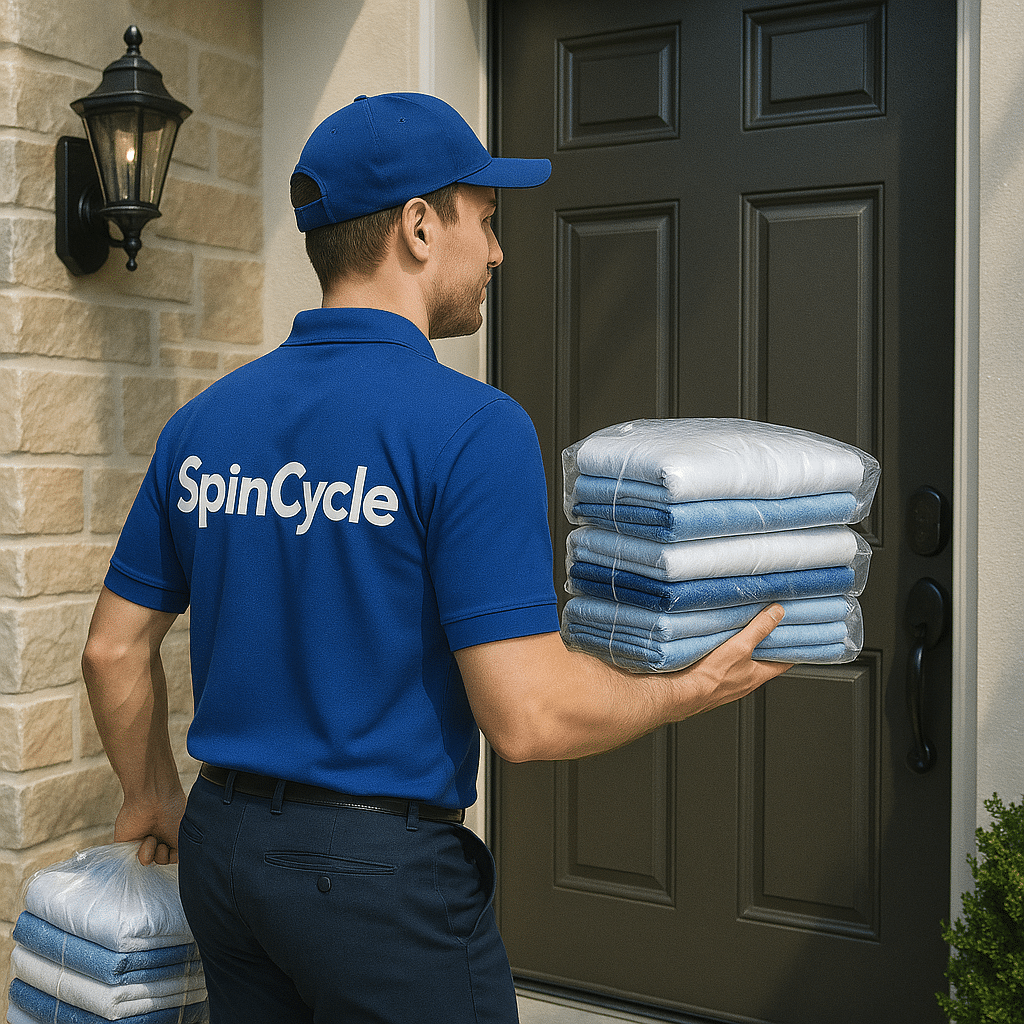
Likewise, if you manage uniforms for a local sports team or run a business that sees a lot of grass and dirt stains, consider our
commercial laundry service. We handle high-volume orders with the same stain-busting expertise, helping keep team jerseys and work uniforms looking their best. And for those who prefer DIY but need bigger machines or a friendly space to do laundry, our
self-service laundromat is open daily with plenty of large washers – perfect for washing muddy soccer kits or grass-stained jeans in one go.

Grass stains may be tough, but with the right approach (and a little help from your neighborhood laundry pros), they’re far from impossible to remove. Treat them quickly, use the techniques and tips above, and you’ll keep your clothes looking as clean as a freshly mowed outfield.
 Kids rolling on the lawn or a weekend of gardening can leave your clothes sporting those telltale yellow-green smears. Grass stains might be a proud badge of outdoor fun—on jeans, kids’ t-shirts, even sports uniforms—but they don’t have to be permanent. In this guide, we’ll show you how to remove grass stains from clothing using simple, time-tested methods. By acting quickly and using the right techniques, you can get grass stains out of clothes and keep your wardrobe looking fresh.
Kids rolling on the lawn or a weekend of gardening can leave your clothes sporting those telltale yellow-green smears. Grass stains might be a proud badge of outdoor fun—on jeans, kids’ t-shirts, even sports uniforms—but they don’t have to be permanent. In this guide, we’ll show you how to remove grass stains from clothing using simple, time-tested methods. By acting quickly and using the right techniques, you can get grass stains out of clothes and keep your wardrobe looking fresh. Why grass stains are tough to remove
Grass stains aren’t ordinary dirt – they’re made of organic pigments that can bond with fabric fibers like a dye. In fact, cotton and other natural fabrics grab onto the green chlorophyll from grass at a molecular level, almost as if you’d tie-dyed the cloth. That’s why grass stain removal can be tricky once the stain sets in.
Timing is everything. A fresh grass stain is much easier to deal with than one that’s been sitting for days or been through the dryer. The longer you wait, the more those pigments sink in and the harder they are to dislodge. We recommend treating grass stains as soon as possible for the best results. And always check that a stain is gone before machine drying your garment – heat can “cook” the stain into the fabric, making it permanent.
Why grass stains are tough to remove
Grass stains aren’t ordinary dirt – they’re made of organic pigments that can bond with fabric fibers like a dye. In fact, cotton and other natural fabrics grab onto the green chlorophyll from grass at a molecular level, almost as if you’d tie-dyed the cloth. That’s why grass stain removal can be tricky once the stain sets in.
Timing is everything. A fresh grass stain is much easier to deal with than one that’s been sitting for days or been through the dryer. The longer you wait, the more those pigments sink in and the harder they are to dislodge. We recommend treating grass stains as soon as possible for the best results. And always check that a stain is gone before machine drying your garment – heat can “cook” the stain into the fabric, making it permanent.

 Step 4: Wash the garment properly. Wash the item as you normally would, but pay attention to water temperature and settings. Check the care label and use the warmest water safe for the fabric – for many cottons and synthetics, warm or hot water helps remove the stain more effectively. (Delicate fabrics like athletic jerseys, silk, or wool should be washed in cool water to avoid damage.) Adding an oxygen bleach (color-safe bleach) to the wash can boost grass stain removal, especially for stubborn stains or white garments. Use your washing machine’s regular cycle or a heavy-duty cycle for heavily soiled play clothes.
Step 5: Check before drying. After washing, inspect the previously stained area while it’s still damp. If you still see any hint of green or yellow, do not put the garment in the dryer yet. Heat from the dryer can set any remaining stain, making it much harder to remove. Instead, repeat the pre-treatment and washing steps again or try an alternative removal method (more on those below). If the stain is gone, you can dry the clothing as usual and enjoy its return to a clean, wearable state.
Step 4: Wash the garment properly. Wash the item as you normally would, but pay attention to water temperature and settings. Check the care label and use the warmest water safe for the fabric – for many cottons and synthetics, warm or hot water helps remove the stain more effectively. (Delicate fabrics like athletic jerseys, silk, or wool should be washed in cool water to avoid damage.) Adding an oxygen bleach (color-safe bleach) to the wash can boost grass stain removal, especially for stubborn stains or white garments. Use your washing machine’s regular cycle or a heavy-duty cycle for heavily soiled play clothes.
Step 5: Check before drying. After washing, inspect the previously stained area while it’s still damp. If you still see any hint of green or yellow, do not put the garment in the dryer yet. Heat from the dryer can set any remaining stain, making it much harder to remove. Instead, repeat the pre-treatment and washing steps again or try an alternative removal method (more on those below). If the stain is gone, you can dry the clothing as usual and enjoy its return to a clean, wearable state.


 Likewise, if you manage uniforms for a local sports team or run a business that sees a lot of grass and dirt stains, consider our commercial laundry service. We handle high-volume orders with the same stain-busting expertise, helping keep team jerseys and work uniforms looking their best. And for those who prefer DIY but need bigger machines or a friendly space to do laundry, our self-service laundromat is open daily with plenty of large washers – perfect for washing muddy soccer kits or grass-stained jeans in one go.
Likewise, if you manage uniforms for a local sports team or run a business that sees a lot of grass and dirt stains, consider our commercial laundry service. We handle high-volume orders with the same stain-busting expertise, helping keep team jerseys and work uniforms looking their best. And for those who prefer DIY but need bigger machines or a friendly space to do laundry, our self-service laundromat is open daily with plenty of large washers – perfect for washing muddy soccer kits or grass-stained jeans in one go.
 Grass stains may be tough, but with the right approach (and a little help from your neighborhood laundry pros), they’re far from impossible to remove. Treat them quickly, use the techniques and tips above, and you’ll keep your clothes looking as clean as a freshly mowed outfield.
Grass stains may be tough, but with the right approach (and a little help from your neighborhood laundry pros), they’re far from impossible to remove. Treat them quickly, use the techniques and tips above, and you’ll keep your clothes looking as clean as a freshly mowed outfield.

